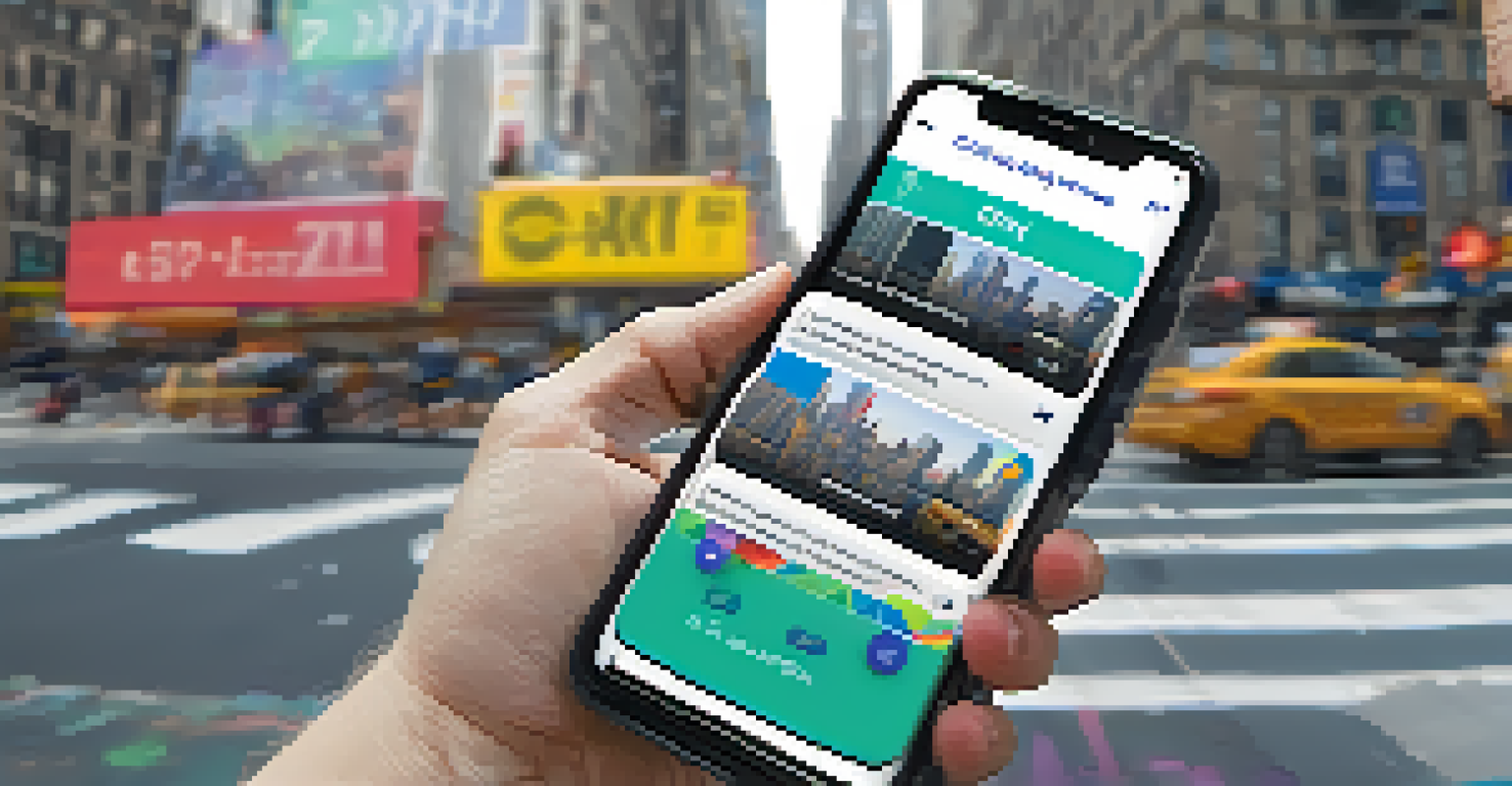Civic Technology: Bridging the Gap Between NYC and Citizens

Understanding Civic Technology and Its Importance
Civic technology refers to the use of digital tools to facilitate better communication between government and citizens. It serves as a bridge, helping people engage with local authorities and participate in decision-making processes. In a bustling city like New York, where millions live, the need for effective communication is paramount to ensure that every voice is heard.
Technology is best when it brings people together.
By leveraging civic tech, municipalities can transform the way they interact with residents, making it easier for citizens to access information and services. For instance, online platforms can streamline processes such as permit applications or neighborhood feedback. This not only enhances transparency but also fosters trust between the government and its citizens.
Moreover, civic technology empowers individuals to take an active role in their communities. From reporting issues like potholes to participating in local forums, technology enables residents to engage meaningfully with their city. Ultimately, this collaboration can lead to more informed decision-making and a stronger sense of community.
Key Examples of Civic Technology in NYC
New York City has embraced various civic tech initiatives that exemplify this concept. One notable example is the NYC 311 service, which allows residents to report non-emergency issues via phone, online, or through a mobile app. This platform not only improves the efficiency of city services but also encourages residents to voice their concerns.

Another innovative project is the City Council's use of open data. By making city data publicly accessible, citizens can analyze trends, track spending, and hold their elected officials accountable. This level of transparency empowers residents to engage in informed discussions about their city's priorities and policies.
Civic Tech Enhances Government-Citizen Interaction
Civic technology bridges the gap between local authorities and residents, facilitating better communication and engagement in decision-making processes.
Additionally, participatory budgeting is a fantastic example of civic technology in action. Residents can propose and vote on how to allocate a portion of the city's budget, fostering community involvement. This initiative not only enhances civic engagement but also ensures that funding aligns with the community's needs.
The Role of Social Media in Civic Engagement
Social media platforms have become crucial in bridging the gap between NYC residents and their government. These platforms facilitate real-time communication, allowing residents to receive updates on city initiatives and express their opinions. For example, the NYC Mayor's Office actively uses Twitter and Facebook to engage with the public and disseminate important information.
Civic engagement is not just an option; it is a responsibility that every citizen must embrace.
Moreover, social media's interactive nature encourages dialogue between citizens and officials. Residents can share their thoughts on city projects, participate in polls, or ask questions directly. This two-way communication fosters a sense of community and helps city leaders understand the concerns of their constituents.
However, it's essential to recognize the challenges associated with social media engagement. Not all residents have equal access to technology or social media platforms, which can lead to disparities in participation. Therefore, it's crucial for the city to ensure that its digital outreach efforts are inclusive and equitable.
Challenges Faced by Civic Technology Initiatives
While civic technology offers many benefits, it also faces significant challenges. One major issue is the digital divide; not all residents have the same level of access to technology or the internet. This disparity can result in certain communities being underrepresented in civic engagement efforts, highlighting the need for inclusive solutions.
Additionally, data privacy concerns can create hesitance among residents to engage with civic tech platforms. People want to ensure that their personal information is protected and that their online interactions are secure. Governments must address these concerns by implementing robust data protection measures and being transparent about how data is used.
Social Media Fuels Civic Engagement
Social media platforms enable real-time interaction between citizens and their government, fostering dialogue and community involvement.
Lastly, civic technology initiatives require ongoing funding and support to be sustainable. Without adequate resources, these programs may struggle to maintain their effectiveness. City governments must prioritize civic tech in their budgets to ensure that they can continue to foster communication and engagement with their residents.
The Impact of Civic Technology on Local Decision-Making
Civic technology has a profound impact on local decision-making processes. By facilitating greater public input, city officials are better equipped to understand the needs and desires of their constituents. This increased awareness leads to more responsive governance and policies that reflect the community's priorities.
For instance, when residents participate in online surveys or forums to discuss neighborhood development, their feedback can directly influence city planning decisions. This collaborative approach not only strengthens community ties but also ensures that projects align with residents' visions for their neighborhoods.
Moreover, civic tech can help identify and address systemic issues that might go unnoticed. By analyzing data collected from various platforms, city officials can spot trends and areas of concern, allowing them to develop targeted interventions. Ultimately, this data-driven approach enhances the effectiveness of local governance.
Future Trends in Civic Technology for NYC
As technology continues to evolve, so too will civic tech initiatives in New York City. One emerging trend is the use of artificial intelligence (AI) to enhance civic engagement. For example, AI-powered chatbots can provide residents with immediate responses to inquiries, making it easier for them to access information.
Another trend is the integration of geographic information systems (GIS) in civic tech platforms. By mapping data visually, residents can better understand complex issues like environmental hazards or infrastructure needs in their neighborhoods. This spatial awareness can lead to more informed discussions and effective advocacy.
Challenges in Civic Tech Participation
Despite its benefits, civic technology faces challenges like the digital divide and data privacy concerns that can hinder equitable civic engagement.
Finally, as cities worldwide adopt smart technology, NYC will likely follow suit. Smart city initiatives can optimize resource allocation and enhance service delivery, ultimately improving the quality of life for residents. However, as these technologies advance, it's crucial to ensure that they remain accessible and beneficial to all citizens.
How Citizens Can Get Involved with Civic Technology
Getting involved in civic technology is easier than many might think. Residents can start by exploring existing platforms like NYC 311 or engaging with their local council members on social media. These channels provide valuable opportunities for residents to voice their concerns and participate in local governance.
Additionally, citizens can join community organizations that focus on civic engagement and technology. Many of these groups host workshops, events, and forums to educate residents about civic tech and encourage participation. Being part of such initiatives can amplify individual voices and foster collaboration.

Finally, residents can advocate for more civic tech initiatives in their neighborhoods. By expressing their support for these programs and highlighting their benefits, citizens can influence local policymakers to prioritize civic engagement tools. In doing so, they contribute to building a more connected and responsive city.